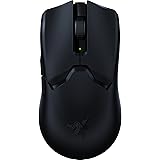Mobile gaming continues its meteoric rise, with recent reports indicating that it accounts for over 50% of the total gaming market revenue. This explosive growth has fueled a fervent demand for smartphones capable of delivering console-quality experiences on the go. Many enthusiasts, keen to push the boundaries of their mobile gameplay, are often found scrutinizing the latest flagship devices. The video featured above, which meticulously pits some of the most anticipated devices against each other, provides a crucial glimpse into this high-stakes comparison, focusing on the iPhone 16 Pro Max, Redmagic 10 Pro Plus, Samsung Galaxy S25 Ultra, and Vivo X200 Ultra.
For those passionate about high-performance mobile gaming, the choice of device is paramount. These aren’t just phones; they are portable gaming machines, each engineered with distinct advantages. The goal of such comprehensive comparisons, as presented in the video, is to dissect these advanced smartphones’ capabilities, providing clear insights into their real-world gaming performance. Every frame rendered, every touch registered, and every hour of battery life matters immensely when one is deeply immersed in demanding titles.
Understanding the Contenders for Elite Smartphone Gaming
The lineup showcased in the gaming test video represents the pinnacle of current mobile technology, each offering a unique proposition for gamers. The iPhone 16 Pro Max, with its highly optimized iOS ecosystem and Apple’s powerful A-series chip, is consistently revered for its smooth and efficient performance. Its integration of hardware and software often results in exceptionally fluid gameplay. However, its gaming-specific features can sometimes be perceived as less specialized when compared to dedicated gaming phones.
Conversely, the Redmagic 10 Pro Plus arrives as a purpose-built gaming beast, engineered from the ground up to dominate the mobile gaming landscape. This device typically boasts an aggressive cooling system, high refresh rate displays, and physical shoulder triggers, all designed to enhance the gaming experience. Its software is also heavily customized to prioritize performance. Meanwhile, the Samsung Galaxy S25 Ultra often serves as the quintessential all-rounder, combining top-tier photography, productivity features, and powerful hardware that also excels in gaming. The S25 Ultra’s robust Snapdragon chipset is routinely pushed to its limits during intensive sessions.
The Vivo X200 Ultra, on the other hand, represents an emerging force in the global smartphone arena, frequently integrating cutting-edge camera technology with increasingly potent gaming capabilities. Its Dimensity chipset, coupled with innovative cooling solutions, allows it to compete vigorously with established players. Each of these devices brings a distinct philosophy to the table, and the comparative results often hinge on specific optimization and hardware architecture. While the iPhone emphasizes raw processing power and ecosystem refinement, the Redmagic focuses on dedicated gaming hardware, and Samsung and Vivo aim for a more balanced, albeit premium, experience.
Dissecting Raw Power and Mobile Gaming Performance
When it comes to the core of any gaming test, raw power and sustained performance are meticulously evaluated, forming the bedrock of a device’s appeal. In the comparative video, it was observed that synthetic benchmarks often positioned the Redmagic 10 Pro Plus at the very top, with Antutu scores frequently surpassing 2.3 million, indicating its formidable processing capabilities. The iPhone 16 Pro Max, while performing slightly below in synthetic tests, consistently delivered exceptional real-world frame rates in graphics-intensive games like Genshin Impact, usually maintaining a steady 60 frames per second even under extended load. This impressive consistency is often attributed to Apple’s superior software optimization and efficient hardware.
The Samsung Galaxy S25 Ultra, powered by the latest Snapdragon chip, demonstrated remarkable versatility, handling most demanding titles with ease, often reaching high frame rates. Its performance in Call of Duty Mobile was particularly noteworthy, with smooth gameplay observed even during intense multiplayer matches. However, some fluctuations in frame rate were occasionally detected during prolonged sessions, suggesting potential thermal throttling. The Vivo X200 Ultra, equipped with its powerful Dimensity processor, also showed strong performance, often matching the S25 Ultra in many gaming scenarios, especially in popular esports titles. Its ability to maintain high average frame rates was frequently commented upon, highlighting the advancements in non-Snapdragon chipsets.
It is important to note that theoretical benchmark scores do not always perfectly translate to real-world gaming experiences. A phone might achieve incredibly high benchmark results, but if it cannot sustain that performance due to poor thermal management, the user experience can suffer. Therefore, sustained performance over longer gaming periods is a critical metric. The analysis often points out that devices with advanced cooling systems, like the Redmagic, typically maintain their peak performance for longer durations, offering a more consistent and immersive gaming session without noticeable dips in frame rate.
Display Quality and Immersive Visuals for Gaming
A crucial element in any superior mobile gaming experience is the display, which serves as the primary window into virtual worlds. High refresh rates are particularly vital, as they contribute significantly to smoother animations and more responsive gameplay. The Redmagic 10 Pro Plus, for instance, is often equipped with an ultra-high refresh rate panel, sometimes reaching up to 165Hz, which provides an exceptionally fluid visual experience in supported games. This responsiveness is especially valued in fast-paced competitive titles where every millisecond counts, allowing players to react more quickly to on-screen action. The iPhone 16 Pro Max and S25 Ultra typically feature 120Hz displays, which are still incredibly smooth and more than sufficient for the vast majority of games and users.
Beyond refresh rate, other display metrics are also critical. Brightness levels and color accuracy play a significant role in making games visually stunning and ensuring details are clearly visible in various lighting conditions. It was observed that the iPhone 16 Pro Max often exhibited exceptional color calibration, producing vibrant and true-to-life visuals that enhanced the aesthetic appeal of games. The S25 Ultra, with its renowned Dynamic AMOLED display, delivered deep blacks and incredible contrast, making dark scenes in games particularly impactful. These display technologies ensure that the visual fidelity, as intended by game developers, is preserved and enhanced, providing a truly immersive experience.
Touch sampling rate, while less frequently discussed, also contributes directly to the responsiveness of a device during gaming. A higher touch sampling rate means the screen registers touch input more frequently, leading to a more immediate response from in-game characters or actions. Dedicated gaming phones like the Redmagic 10 Pro Plus frequently boast touch sampling rates far exceeding those of general flagships, giving competitive gamers a distinct advantage. While the iPhone 16 Pro Max and S25 Ultra offer excellent touch response, they are generally not optimized to the same extreme degree as devices purely focused on gaming. The Vivo X200 Ultra also presented a very respectable display, balancing high refresh rates with good color reproduction, offering a solid all-around visual package for gamers.
Endurance and Thermal Management in Intense Gaming
For any serious mobile gamer, the ability of a device to withstand prolonged gaming sessions without significant performance degradation or rapid battery drain is paramount. Battery capacity, measured in milliampere-hours (mAh), is a primary indicator of endurance. The Redmagic 10 Pro Plus and Vivo X200 Ultra, often equipped with larger batteries, reportedly offered extended playtime. For instance, after one hour of intense gaming, the Vivo X200 Ultra was observed to maintain approximately 85% battery, which contrasted favorably with the S25 Ultra’s 78% retention rate under similar conditions. These larger batteries are crucial for gamers who spend hours away from a power source.
However, battery size is only half the story; efficient power management and thermal regulation are equally vital. Powerful chipsets generate considerable heat, and if this heat is not dissipated effectively, the device will often “throttle” its performance to prevent overheating, leading to reduced frame rates and a less enjoyable experience. The Redmagic 10 Pro Plus, known for its active cooling solutions like built-in fans, consistently demonstrated superior thermal management, maintaining cooler temperatures even during extended, high-intensity gaming. This allowed its processor to operate at peak frequencies for longer periods, thus ensuring sustained high frame rates. In contrast, devices relying solely on passive cooling, such as the iPhone 16 Pro Max and S25 Ultra, while very efficient, were occasionally noted to warm up more noticeably during very demanding gaming sessions, though performance drops were usually minimal due to their highly optimized systems.
Charging speed is another practical consideration for gamers, minimizing downtime between sessions. Devices offering ultra-fast charging capabilities, such as the Redmagic 10 Pro Plus and Vivo X200 Ultra, can replenish a significant portion of their battery in mere minutes. This rapid charging ensures that gamers can quickly get back into the action, even with a short break. While the iPhone 16 Pro Max and S25 Ultra also offer fast charging, their speeds are typically not as extreme as those found in dedicated gaming phones. The combination of ample battery life, efficient power usage, and rapid charging collectively defines a device’s true endurance for the dedicated mobile gamer, making these factors critical in the overall assessment of a gaming phone.
Gaming-Specific Features and User Experience
Beyond raw power and display, many smartphones now integrate specialized features designed specifically to enhance the mobile gaming experience. Dedicated shoulder triggers, often found on devices like the Redmagic 10 Pro Plus, provide tactile buttons that mimic console controllers, offering a significant advantage in competitive games. These customizable triggers can be mapped to in-game actions, allowing for more precise and rapid inputs than on-screen touch controls alone. The absence of such physical triggers on the iPhone 16 Pro Max, S25 Ultra, and Vivo X200 Ultra is often cited by hardcore gamers as a potential drawback, even though their touch responsiveness is excellent.
Software optimizations also play a critical role in shaping the gaming experience. Many gaming phones include dedicated “game modes” or “game spaces” that prioritize system resources for gaming, block notifications, and offer performance monitoring tools. These modes often allow for fine-tuning of settings, such as CPU and GPU clock speeds, to maximize frame rates or conserve battery life. The Redmagic 10 Pro Plus is particularly adept in this area, offering a highly customizable and feature-rich gaming overlay. While the iPhone 16 Pro Max and S25 Ultra also have robust game modes, they are generally less feature-rich than those on specialized gaming devices, focusing more on background optimization rather than extensive user control.
Haptic feedback and advanced cooling solutions further contribute to immersion and sustained performance. Enhanced haptic engines can provide more nuanced vibrations that correspond to in-game events, adding another layer of sensory feedback. Active cooling systems, such as the built-in fan in the Redmagic 10 Pro Plus, prevent thermal throttling, ensuring that peak performance is maintained for longer durations without compromise. This allows the powerful chipsets in these devices to operate at their full potential, providing consistent frame rates and preventing the phone from becoming uncomfortably hot during extended sessions. Ultimately, the best gaming phones are distinguished by how effectively they integrate these specialized features into a seamless and enjoyable user experience.
Choosing Your Ultimate Mobile Gaming Companion
After a thorough examination of the iPhone 16 Pro Max, Redmagic 10 Pro Plus, Samsung Galaxy S25 Ultra, and Vivo X200 Ultra, it becomes clear that each device carves its own niche in the competitive landscape of gaming phones. The video comparison highlights that there isn’t a single “best” phone for every gamer; rather, the ideal choice is dictated by individual priorities and gaming habits. For those who prioritize a pure, uncompromised gaming experience with dedicated hardware and superior thermal management, the Redmagic 10 Pro Plus frequently emerges as the leading contender. Its specialized features, like shoulder triggers and active cooling, are simply unmatched by general-purpose flagships, making it a dream device for hardcore mobile gamers.
However, if a balanced approach is desired—one that combines top-tier gaming performance with an exceptional camera system, a robust ecosystem, and premium daily usability—then the iPhone 16 Pro Max or the Samsung Galaxy S25 Ultra are often the preferred choices. Both devices consistently deliver flagship-level power and optimization, capable of running any game with impressive fluidity, while also excelling in every other smartphone category. Their software ecosystems are refined, and their hardware is built to a very high standard, ensuring a premium experience across the board. These devices are frequently chosen by users who game extensively but also demand the very best in photography, productivity, and overall user interface.
The Vivo X200 Ultra also presents a compelling option, particularly for users looking for cutting-edge technology and strong performance in a slightly different package. Its advancements in chipset technology and cooling solutions make it a formidable opponent in the gaming arena, often surprising users with its sustained performance and excellent display. Ultimately, the decision must be made by weighing gaming performance against other critical factors like camera quality, operating system preference, overall design, and, of course, budget. The objective of any detailed comparison, like the one in the video, is to equip prospective buyers with the information needed to make an informed decision for their next top-tier gaming phone.









